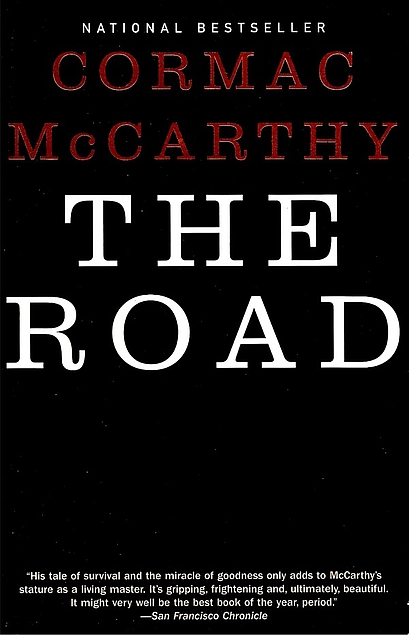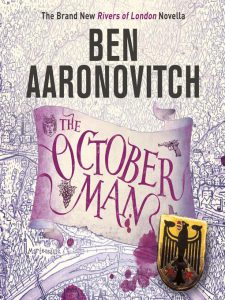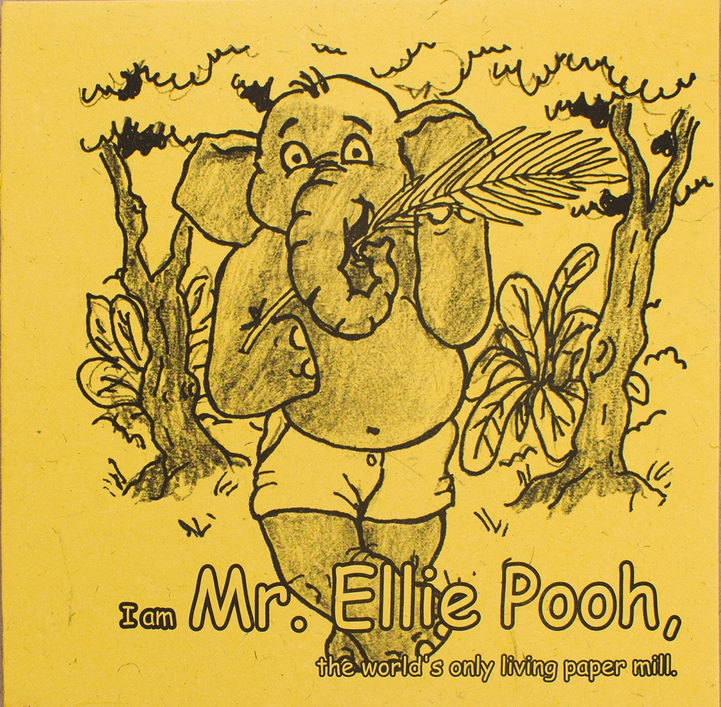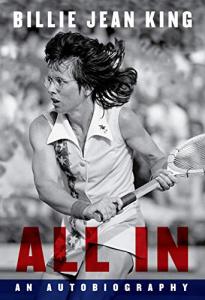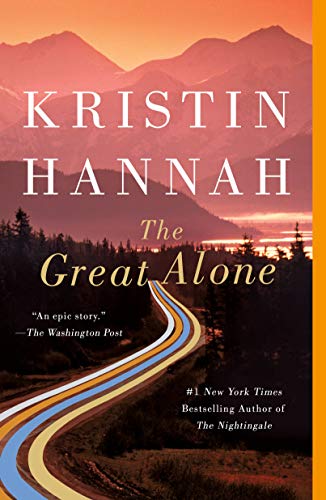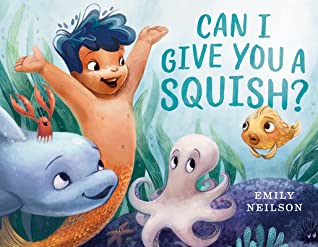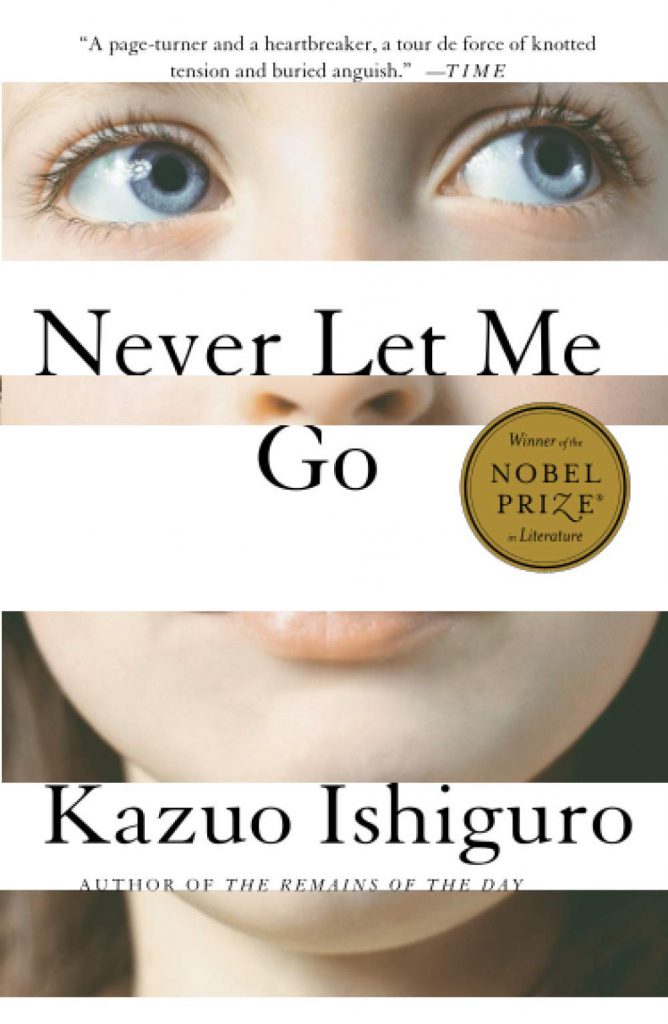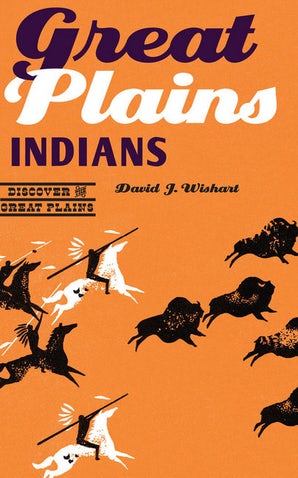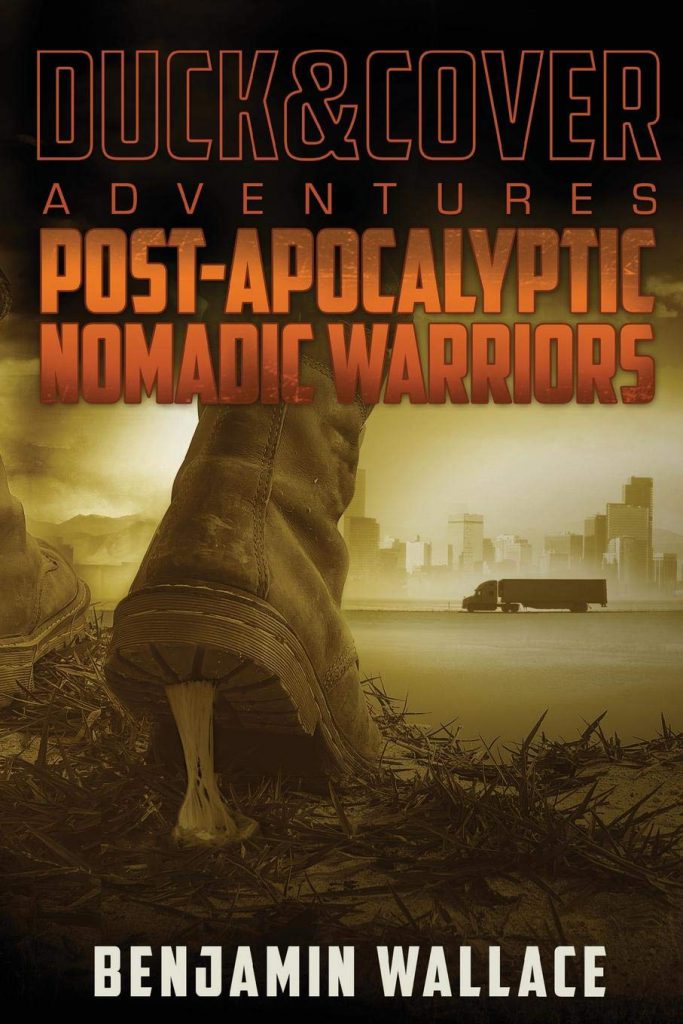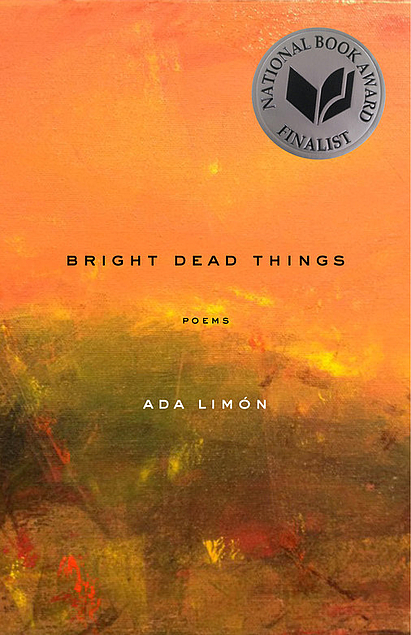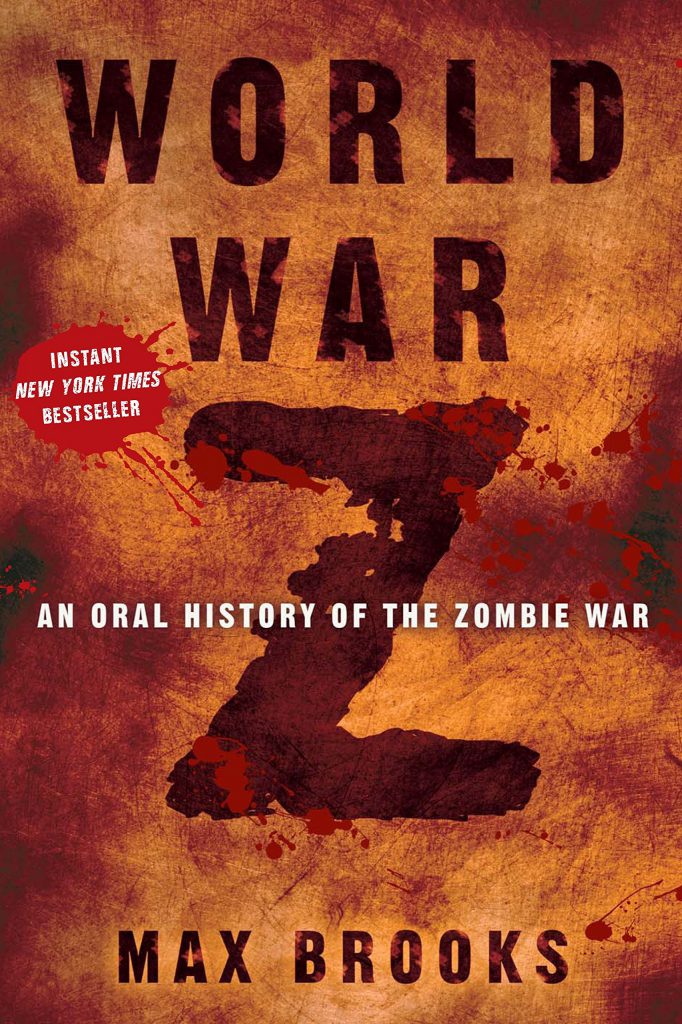Search the Blog
Categories
- Books & Reading
- Broadband Buzz
- Census
- Education & Training
- General
- Grants
- Information Resources
- Library Management
- Nebraska Center for the Book
- Nebraska Memories
- Now hiring @ your library
- Preservation
- Pretty Sweet Tech
- Programming
- Public Library Boards of Trustees
- Public Relations
- Talking Book & Braille Service (TBBS)
- Technology
- Uncategorized
- What's Up Doc / Govdocs
- Youth Services
Archives
Subscribe
Tag Archives: Friday Reads
Friday Reads: Garlic & the Vampire by Bree Paulsen
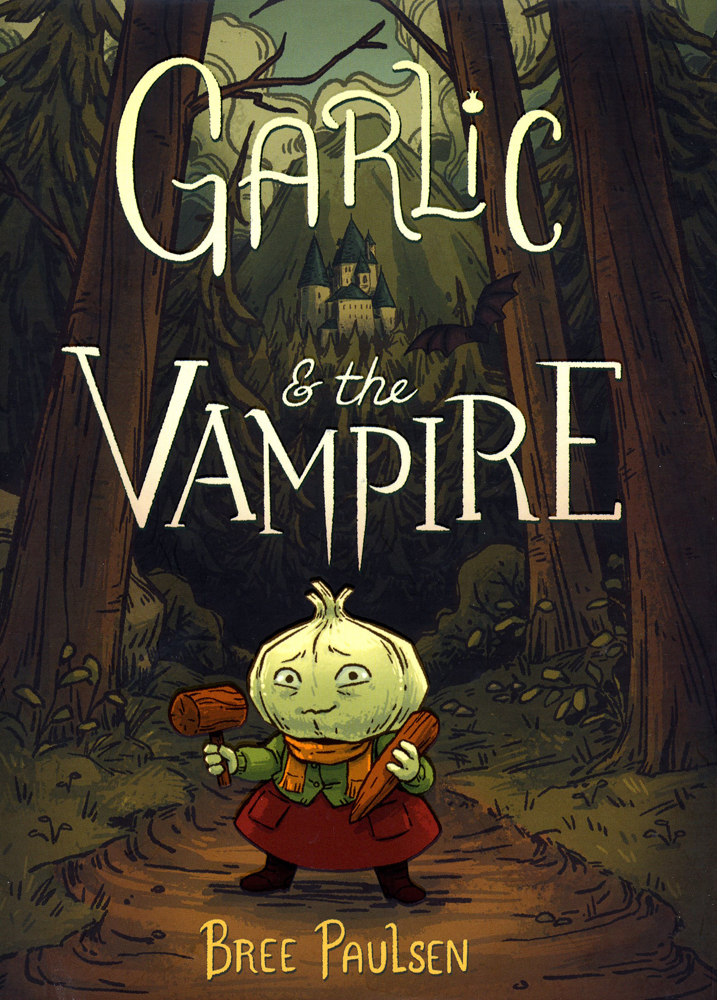
Since it is nearly Halloween, it seems appropriate to discuss a title that includes a vampire. This is a full-color graphic novel aimed at the upper elementary school level. A group of vegetables animated by a witch to help with the gardening and selling of vegetables has reached consciousness – they are aware of what they do and how it helps the townspeople. The have distinct personalities.
Their peaceful life is completely thrown when Potato notices smoke rising from the formerly abandoned castle across the valley. Could a vampire have moved in? All are in a worried state. At their meeting where they learn it is a vampire, thanks to the magic of the witch, Celery (who is miffed at Garlic) suggests Garlic should deal with him. It does make sense, vampires are known to be put off by garlic, but this Garlic is a quiet, nonthreatening creature and she trembles at the idea of confronting a vampire. Still, Garlic puts on a brave face and prepares for the mission. Readers will delight in the idea that at the last minute the witch assigned Celery to accompany her on the mission. Celery abandons Garlic at the castle door, immediately heading back home. Garlic bravely goes in, and finds something quite unexpected. Staking the vampire will not be necessary.
(The Nebraska Library Commission receives free copies of children’s and young adult books for review from a number of publishers. After review, the books are distributed free, via the Regional Library Systems, to Nebraska school and public libraries.)
Paulsen, Bree. Garlic & the Vampire. Quill Tree Books, 2021.
Friday Reads: The Road by Cormac McCarthy
“He thought the month was October but he wasnt sure. He hadnt kept a calendar for years …
He lowered the glasses and pulled down the cotton mask from his face.”
This is how Cormac McCarthy’s The Road begins.
It sounds familiar. It sounds relevant — timely; I was afraid, almost, that it would be too timely.
I’d read The Road before, years ago, and it easily became a favorite. Something about McCarthy’s prose is more akin to poetry, and that teetering, razor-edge brilliance of darkness not entirely lost to despair. This is a book whose memory of reading has haunted me through our own ever seeming dystopia; the world darkening through the corners like a vignette. And something beckoned me towards the book again; a glimmer of hope, survival.
This time, I chose the audiobook. Because this time, I was thinking about stories, and what will come next, and what came before: how stories were told without paper, how simple it seems to carry something that weighs nothing more than the air in your lungs. How stories might ask to be told again, in the future (a clock, time, is a great circle).
I’m a reluctant convert to audiobooks — my attention “span” is more of a blip these days, but I ended up listening while laying in bed, right before sleep. I’m sure this was partially responsible for some stressful dreams, but to be honest, they weren’t really any worse than normal.
The other trouble I have with audiobooks — the primary reason for my hesitation — is that I am so very picky about narrators. When I first played the recording of The Road, courtesy of my public library’s hoopla service, I almost backed out.
At first, hearing McCarthy’s words read instead of reading them was a jolt. McCarthy’s style is sparse — he eschews punctuation, dialogue tags, constructs sentences in short, sharp bursts. To hear it spoken out was so different than seeing it on the page; and yet, as I adjusted, listening ended up grounding the prose much more familiar terms. And, to be honest, it became enjoyable. When less engaged from the work of literature, I picked up on new dynamics of the story, new emotions; the narrator Tom Stechschulte, delineated the characters with excellent voices, and added a layer of closeness I don’t think I’d had to the story before. I’d originally enjoyed The Road because the language was gorgeous, and I like McCarthy’s style. I respected the human element, but I hadn’t connected to it. Having an actual person read the story — bring it to life, add dimension, did that for me in a way that hearing the story in the theater of my own mind wasn’t quite able to do. Near the midway point in the book, there’s a scene between the man and his wife — a terrible argument, about the horrors and reality of their future — that I felt was so well acted, and I was caught up in it, breathless.
The center of The Road is the man, and the boy — his son, his only son, and his legacy, and his only reason for living — unnamed and surviving the last gasps of a world ended on the road, trying to make it south, to the coast where the winter might be survived. On the surface, there’s really no reason to survive. Nothing is going to get better; in fact, in a world where cannibalism has become a fore-running dietary option, humanity made macabre ouroboros, it’s safe to say things are only going to get worse. Yet, call it foolish, call it stubbornness, call it humanity — the man and the boy keep going. Still they keep going, down the road.
I’ve always read that as the definition of hope, and now I’ve heard it, too.
McCarthy, Cormac. The Road. Narrated by Tom Stechschulte, Recorded Books, Inc., 2006. Audiobook.
Friday Reads The October Man, by Ben Aaronovitch, novella
The October Man, by Ben Aaronovitch is an offshoot of Aaronovitch’s The Rivers of London series, and perfect for the coming Halloween season. Set in the city of Trier, one of the few Roman conquered cities in Germany, this modern urban fantasy runs, KDA Polezei Tobias Winter, and local officer Vanessa Sommer, up and down hills, staircases, and steep vineyards in a puzzling magic and mythology-laden case.
Tobias is a member of the Abteilung Komplexe und diffuse Angelegenheiten (KDA)—Department of Complex and Diffuse Matters, a lovely, and vague way to say that his division looks into what it calls “infractions” –of a supernatural nature, often involving death. No aliens are involved, but, as in Aaronovitch’s other stories, a great many creatures from myth, plus, of course, river spirits. Tobias is the Director’s apprentice, just as Peter Grant of the Rivers of London Series, is an apprentice of the Nightingale. Vanessa Sommer is a Kriminalpolizei officer in Trier, specializing in crimes involving wine. As the story develops, she also has a budding talent for magic.
The mystery begins with a dead male body, covered with a fungus called Botrytis cinerea or Noble Rot (sometimes introduced to grapes to create a sweet wine, ) and not usually found on humans, much less as a cause of death. The body was dumped below a steep field of grapes, and above a river. The victim was a member of a club of mostly middle-aged men, who started with the quote from Johan Wolfgang von Goethe, “Life is too short to drink bad wine.” They begin by drinking good wine, but eventually branch out by beyond their comfort zones, taking classes, going to museums, going to live theatre. When the first death occurs, it was actually at the point of starting to voluntarily disband. Every member had improved his life and was happier in it. Tobias and Vanessa have to discover how magic is involved.
The owner of the vineyard is involved, as well. The Stracker family had a connection with the river below, the Kyll (or Kelly, as she prefers to be known when walking around town.) When Jacqueline Stracker inherited the vineyard from her grandfather, she returned from working in the wine country of California, and that may have started the supernatural activity. And when pressed about unusual activities, admits to following her grandfather one night when he made a “wine sacrifice” to the river, intending to steal the bottles. She was very surprised when a shining, nude woman walked out of the water and gave her a message for her grandfather, that the compact was broken. She never mentioned the incident to family.
Aaronovitch’s writing is addicting, his descriptions of the countryside and highways can be confusing, but add texture to his stories. His characters have depth. I’d like more stories about these two. It doesn’t hurt to have an interest or background in folklore and mythology, but it certainly not necessary. Just sit back and enjoy the ride.
The October Man, by Ben Aaronovitch, A Rivers of London Novella, Subterranean Press, ISBN 9781596069084, hard back. 208 pages.
Posted in Books & Reading
Tagged Ben Aaronovitch, Friday Reads, Horror, magic, Rivers of London series, urban fantasy
Leave a comment
Friday Reads: I Am Mr. Ellie Pooh by Dr. Karl Wald
This is the first time I’ve reviewed a coloring book. But it’s made out of elephant dung paper, so I couldn’t resist. Turns out when you wash the stinky poo part away from elephant dung, you get raw vegetation. I don’t want to know how they found this out.
After boiling the vegetation in a pressure cooker to kill bacteria, the end-result is mixed with post-consumer paper. From here, it’s smooth sailing. The paper can be made just like handmade paper: screen, press, and hang to dry. I used to make paper when I was in high school, so I was fascinated by elephant dung paper.
Now kids (and adults!) can color on paper that is 50% fiber from elephant dung and 50% recycled paper. The process was perfected by Dr. Karl Wald and his veterinarian friend on a trip to Sri Lanka. The book tells the story of how the paper is made, and how the book you are holding is saving elephants from angry farmers. You can read the story behind the story on the Mr. Ellie Pooh website. You can also see pictures of the paper-making process and how Mr. Ellie Pooh is creating jobs for local papermakers and artisans in the “About” section.
I got these coloring books for my niece and nephew for Christmas a couple years ago and they loved Mr. Ellie Pooh. Enough to grab Winnie the Pooh and declare, “Pooh is an elephant too!? There can be only one!” Then threw Winnie behind the couch. Poor bear.
At the time, I found the coloring books at Ten Thousand Villages in Lincoln. I’m not sure if they are still there, but they are also sold on the Mr. Ellie Pooh website. Apparently they have a bunch more stuff now too. I didn’t see the coloring book on Amazon, but the store does carry some items through Amazon as well. So if you’re looking for a new activity in the library, give Pooh a try.
Disclaimer: Pooh paper looks and smells just like regular paper. If I hadn’t read the stories and seen the pictures, I would have never known. That’s the power of pooh.
Friday Reads: “A Discovery of Witches” by Deborah Harkness

Have you ever read a book that reminds you of someone?
The novel “Discovery of Witches” by Deborah Harkness follows historian Diana Bishop as she researches science in the 15th and 16th centuries, more specifically manuscripts covering alchemy. Sounds boring, right?
During her work, Diana runs across one particular manuscript that just feels different. Literally! The book seems to sigh when she places her hand on it. Slightly spooked by the sigh, and what she finds within the volume, she sends it back to the bowels of the Oxford library where she has been working hoping to forget about it.
This seemingly insignificant moment sparks a journey for Diana across Europe, and eventually to her childhood home in New England, all the while trying to avoid witches, vampires, and other creatures, with the help of Matthew Clairmont, a fellow academic and a vampire. Oh, did I forget to mention that Diana is a witch? She’s been spending her entire life trying to forget that fact, too, leading to some interesting situations stemming from her out-of-control magic.
“Discovery of Witches” has recently been made into a series by AMC, causing the book series to have a resurgence. Deborah Harkness doesn’t waste a single word or phrase in this book and while a pretty hefty at nearly 600 pages I found this book really easy to read and enthralling. So much so, I’ve already purchased the rest of the series.
By now you’re probably curious about whom I’m reminded of when reading this book. I came across this book while spending an afternoon with my best friend, who just so happened to be heading off to Europe to teach at a university. The adventure, romance, and mystery of this novel will catch anyone’s interest but for me, the parallels to my own “Diana” made this read so much more enjoyable.
Harkness, Deborah. A Discovery of Witches. Penguin Books, 2011.
Friday Reads: All In: An Autobiography, by Billie Jean King
Forty-eight years ago, on September 20, 1973, 90 million people worldwide watched top women’s tennis player, Billie Jean King, 29, defeat former champion, Bobby Riggs, 55, in the Battle of the Sexes. I was eight and not a sports fan, but King has been on my radar, at least peripherally, ever since.
Just because you know a few facts about someone doesn’t mean you really know them, though, so it’s been a delight listening to King narrate her recently released autobiography, All In. It’s a long listen—18 hours—but King provides an engaging, enlightening account of her lifelong fight for equal treatment and pay for women in sports. And the fact that I don’t understand or particularly care about tennis didn’t inhibit my enjoyment of the book one bit!
One surprising takeaway is just how early King’s sensitivity to injustice and inequality, along with her commitment to rooting it out, kicked in. As an athletic, sports-loving girl growing up in the 1950s, King regularly ran up against gender-based stereotypes and restrictions. They ranged from being yanked from a photo of junior tennis tournament participants for wearing shorts instead of a skirt, to watching top teen boy tennis players getting comped for meals at the Los Angeles Tennis Club while she, a top teen girl, ate brown-bag lunches from home, to being told at 15 that she’d be good because she was ugly. “Even if you’re not a born activist, life can damn sure make you one,” she says of these early experiences.
Though young, King’s own run-ins with gender-based slights and limitations sensitized her to race-based discrimination as well. In 1955, while attending a championship tournament at the Los Angeles Country Club, she was particularly struck by “how white everything was.” She had what she describes as an epiphany:
I told myself that day that I would spend my life fighting for equal rights and opportunities for everyone, so no one felt scorned or left out. I believed our church’s teaching that I was put on this earth to do good with my life. Now I had a better idea what my calling could be: I could bring people together through tennis. If I was good enough and fortunate enough to be No. 1 in the world, tennis would be my platform.
King achieved number 1 ranking in the world for the first time in 1966 (she’d go on to achieve it five additional times) and she stayed true to her calling–leveraging personal success to fight for social change. All athletic champions feel pressure to stay at the top of their game, but for King the stakes were higher than personal glory: “Unless I was number 1, I wouldn’t be listened to,” she’s stated. And to me, learning more about these fights for equal rights, especially what went on behind the scenes, was the most interesting and inspiring aspect of the book.
Here are just a few of the fights you’ll learn more about if you tackle All In:
- In 1970, despite threats of suspension from the male-run tennis establishment, King, along with eight other women, signed $1 contracts with Gladys Heldman, publisher of World Tennis magazine, to create the first women’s pro tennis circuit.
- King campaigned vigorously for equal tournament prize money for women tennis players who were paid significantly less than their male peers—sometimes by a margin of eight to one. The U.S. Open was the first major tournament to offer pay equity, in 1973, after King threatened to boycott, but Wimbledon didn’t come around until 2007.
- When King started college in 1961 she’d already won her first Wimbledon championship, but no sports scholarships were forthcoming because she was a woman. Just over a decade later, King testified before Congress in support of Title IX. Passed in 1972, this legislation prohibited sex discrimination in all federally funded school programs, including sports. This meant schools had to start distributing athletic scholarship dollars equitably between male and female student athletes.
If you like inspiring reads that shows how much work goes into achieving incremental social progress, All In is definitely worth checking out!
King, Billie Jean, et al. All In: An Autobiography. Random House Audio, 2021.
Friday Reads: The Great Alone, by Kristin Hannah
I’m not sure why I haven’t read Kristin Hannah’s books until recently, but once discovered, I am completely hooked. So far, I’ve read four of her books, loved all of them, but especially The Great Alone. It kept my interest so completely that I stayed up late reading, and when I couldn’t read it, I was listening to the audio version. It’s that good.
Alaska, 1974. Unpredictable. Unforgiving. Untamed.
For a family in crisis, the ultimate test of survival.
Ernt Allbright, a former POW, comes home from the Vietnam war a changed and volatile man. When he loses yet another job, he makes an impulsive decision: He will move his family north, to Alaska, where they will live off the grid in America’s last true frontier. Thirteen-year-old Leni, a girl coming of age in a tumultuous time, caught in the riptide of her parents’ passionate, stormy relationship, dares to hope that a new land will lead to a better future for her family. She is desperate for a place to belong. Her mother, Cora, will do anything and go anywhere for the man she loves, even if means following him into the unknown.
At first, Alaska seems to be the answer to their prayers. In a wild, remote corner of the state, they find a fiercely independent community of strong men and even stronger women. The long, sunlit days and the generosity of the locals make up for the Allbrights’ lack of preparation and dwindling resources. But as winter approaches and darkness descends on Alaska, Ernt’s fragile mental state deteriorates and the family begins to fracture. Soon the perils outside pale in comparison to threats from within. In their small cabin, covered in snow, blanketed in 18 hours of night, Leni and her mother learn the terrible truth: They are on their own. In the wild, there is no one to save them but themselves.
In this unforgettable portrait of human frailty and resilience, Kristin Hannah reveals the indomitable character of the modern American pioneer and the spirit of a vanishing Alaska – a place of incomparable beauty and danger.
The Great Alone is a daring, beautiful, stay-up-all-night audiobook about love and loss, the fight for survival, and the wildness that lives in both man and nature. (Audible)
Friday Reads: Can I Give You a Squish? by Emily Neilson
Our two (and a half) year old recently discovered the delightful melodies of “Baby Shark” as performed by the Australian group Bounce Patrol, in multiple versions and complete with choreography, of course. Along with the adorable new dance moves, she’s been much more interested in anything with “fishies,” including books.
Can I Give You a Squish by Emily Neilson is an incredibly cute book about a little merboy and his fish friends. Kai is an enthusiastic hugger who loves to give squishes to his mama and to all of his underwater friends. After meeting a new little puffer fish though, he realizes not everyone likes hugs as much as he thought. With help from an octopus, a dolphin, and a crab, they all learn new ways of showing affection (and asking first), like fin bumps and tentacle shakes. The friends are all very encouraging and supportive of the scared puffer fish, and it’s a great way to start teaching young kids about boundaries and consent.
The illustrations in this book are lovely and it’s just a sweet story.
(She’s also really enjoying the Narwhal and Jelly books by Ben Clanton, if you need another good fishy book.)
With this squish book, I’ve been looking for some other picture books to start teaching or talking about consent/personal space:
- C is for Consent by Eleanor Morrison and Faye Orlove
- Don’t Touch My Hair! by Sharee Miller
- Will Ladybug Hug? by Hilary Leung
- Hands Off, Harry! by Rosemary Wells
Neilson, E. (2020) Can I Give You a Squish?
Friday Reads: The Perfume Thief by Timothy Schaffert
![The Perfume Thief: A Novel by [Timothy Schaffert]](https://m.media-amazon.com/images/I/51WuR6krS9L._SY346_.jpg)
I’m reading the new WWII novel, I’m reading the new perfume novel, I’m reading the new WWII perfume novel, and it’s delightful and I don’t want it to end.
I’ve been looking forward to reading The Perfume Thief by Timothy Schaffert, and it’s finally here! The publisher describes the book as “A Gentleman in Moscow meets Moulin Rouge.” I’m ready to follow Clementine, a raconteur in tailored suits, who’s spent her seventy plus years living life her way—while happening to break all of society’s rules. Now she’s facing a big change in her life—the Nazis are threatening to destroy Paris, including the vibrant underground scene she loves. It turns out she has some very exceptional skills, honed over decades of her refined and indecent life, that can help hand defeat to the Nazis. She just has to thread the needle carefully, with the finest silk, of course.
I imagine a few agents in Hollywood are getting calls about playing the part of Clem in the movie that must happen. I can see Helen Mirren and Meryl Streep fighting over the part, but I can see Jamie Lee Curtis owning it. Of course Cate Blanchett or Tilda Swinton, although they are a bit young for the part—isn’t that refreshing? Casting suggestions are welcome in the comments, of course. (Not just for Clem, but also for Zoe St. Angel, and also the villain, Oskar Voss.)
Did I mention Clem is from Nebraska? Did I mention Schaffert painstakingly researched Paris life, down to the weather reports on every day in the book? Did I mention it’s a page-turner? Excuse me while I get back to enjoying The Perfume Thief.
(We did write about The Perfume Thief here as well–yes, we’re fans! And yes, our Book Club Kit is available for Nebraska libraries to check out, and details are at that link.)
Schaffert, T. (2021). The Perfume Thief.
Friday Reads: Reading with Mary
My dear friend Mary, who lives two floors above me, suffered a television outage last winter. This was catastrophic since her TV is always on, serving as companion, entertainer, and white noise. Out of desperation, Mary–who in recent years earnestly believed she’d lost the concentration needed to read an entire book—picked up the copy of Barbara Kingsolver’s Prodigal Summer that I’d given her. She read it cover to cover; it reminded her of her home in North Carolina, and she loved it! More importantly, she felt triumphant, proving to herself that she COULD still read books!
I wanted to keep her reading momentum going so when Nigella Lawson, a favorite food writer of ours, released a new book called Cook, Eat, and Repeat: Ingredients, Recipes, and Stories, I ordered two copies. We kept a running commentary as we consumed the pages. An entire chapter on anchovies? Are they REALLY the bacon of the sea? Saving and cooking with banana peels was a zero waste solution? Not something either of us will try. But her essay on food as a guilty pleasure? That was worth rereading together.
Nigella’s book made me think of Ruth Reichl’s My Kitchen Year: 136 Recipes That Saved My Life: A Cookbook, and I bought it for Mary and I listened to my copy a second time. This lead to conversations about Ruth’s other books, many of which Mary owned. Just as she’d somehow missed My Kitchen Year, I’d missed For You Mom, Finally, so Mary happily lent me her copy.
I turned to Mary’s own book stacks for my next recommendation, handing her an unread copy of The Guernsey Literary and Potato Peel Pie Society, by Mary Ann Shaffer. As a faithful letter writer and a lover of stationary, I had a feeling she would enjoy this epistolary book. She did and was ready for more.
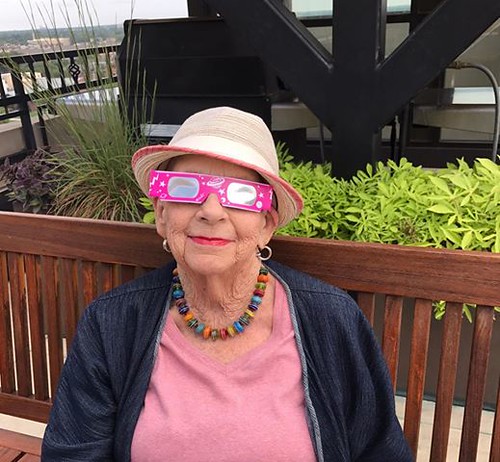
Photo credit: Julee Hammer
After I finished reading Andre Leon Talley: The Chiffon Trenches: A Memoir, I thought it would be a good fit for Mary knowing she had been a Women’s Wear Daily and Vogue subscriber. An added bonus was Andre’s North Carolina nativity. After reading the first chapter she told me she was purposely taking it slow to make it last. Mary took a reading break to watch Wimbledon but once she was finished with Andre, I handed her I.M.: A Memoir by Isaac Mizrahi because I could tell she was still in the mood for fashion designers and had a penchant for biographies.
We next tackled, The Barbizon: The Hotel That Set Women Free by Paulina Bren, recommended by a coworker. This safe haven for modern, working women was the home to many celebrities including Sylvia Plath, an author Mary had previously researched. We both finished and thought the book was interesting and worthwhile but the finest takeaway was our discussion afterwards. I was able to ask Mary questions no one had ever asked her before, and she answered them. It was an intimate communion and an evening I will never forget.
Floundering over what to offer Mary next, I ended up loaning her my copy of The Help, by Kathryn Stockett, continuing with the theme of female solidarity. Mary initially greeted this selection with reticence because she grew up in a house with hired help. However, because I’d earned her trust with my previous recommendations, she acquiesced and agreed to try it. She was hooked from the first page! When she finished it a week later, she returned it with high praise and a heartfelt thank you note I will treasure forever.
Having spotted two Rosamunde Pilcher paperbacks in Mary’s collection, I gave her a copy of the The Shell Seekers, confident she would appreciate Penelope, the bohemian protagonist, and the English locations. She finished in a week, sad for it to be over and sharing that she usually skips over description but she read every word in this book. She then expressed concern that she was now spending too much time reading, but she also wanted more Pilcher books!
Most recently–and just in time for the U.S. Open Tennis tournament–I presented her with the new Billie Jean King autobiography, All In. The next day she told me she stayed up way too late the night before, using the index to cherry pick stories, and that she really needed to get more sleep! My copy of All In is on hold at the library, and I’m eager to read it so we can discuss this amazing icon of tennis and gender equality.
I have never experienced this kind of simpatico with another reader. Whatever aligned for us to enjoy so many of the same books at the same time has been a luxury. Our discussions have been a respite from the pandemic and the news, but the biggest gift is learning more about each other and deepening our friendship. It has been such a pleasure to plot Mary’s reading through these last several months, and I must say I’m so grateful Mary’s television stopped working!
Friday Reads: “Never Let Me Go” by Kazuo Ishiguro
If you could save the lives of eight people by sacrificing the life of one, would you do it? Is it possible to break free of a path your life has been set on since before you were even born? If you create something, do you own it? What if the thing you created is a human? These are all questions a reader will find themselves grappling with in “Never Let Me Go,” the sixth novel by British and Japanese author, Kazuo Ishiguro.
An idyllic childhood spent at a boarding school in the English countryside, what could be better? Kathy spends her adulthood traveling around England working as a Carer, looking after hospice patients. After ’caring’ for two of her old classmates and reminiscing about how they grew up, all Kathy can think about is her childhood. As Kathy’s memories unfold so does the mystery and strangeness that is this “Brave New World” she lives in. With each new memory, we begin to understand just how different Kathy’s life has been, and we come to understand that what at first seems idyllic is far from it.
In “Never Let Me Go” the topics of childhood innocence, science and ethics, and free will are all explored in this thoughtful novel. Readers who like a slow burn and subtle, yet thought-provoking plot twists will enjoy this book.
Ishiguro, Kazuo. Never Let Me Go. Vintage, 2006.
Posted in Books & Reading
Tagged Books & Reading, Friday Reads, Kazuo Ishiguro, Never Let Me Go
Leave a comment
Friday Reads: Great Plains Indians by David J. Wishart
David Wishart covers a vast span of over thirteen thousand years in his book, Great Plains Indians. Many know bits and pieces of this astonishing story. Professor Wishart dispels a number of myths and provides important detail and perspective in his coverage of Indian life on the Great Plains.
Wishart describes in his Great Plains Indians historical account the elements of geography, climate, perseverance, innovation, culture, and adaptation. The book is organized in four broad chapters: coverage of thirteen thousand years of Plains history, life circumstances of Plains Indians around the early nineteenth century, the period Lewis and Clark explored the Plains region, and the period that began and continued with regional control by the United States.
Significant are the impacts of disease (notably smallpox), food sources, climate, horses, guns, alcohol, and beginning contacts and conflict with people moving into the Great Plains region.
Wishart provides extensive coverage of the nineteenth-century and continuing to the present geographic and cultural dispossession of the Great Plains Indians. Within a hundred year span, the Plains Indians land base was reduced from an area extending from Canada to the Gulf of Mexico to a territory inclusive of a small number of reservations in Oklahoma and other Plains areas.
A slim book, Great Plains Indians is written in a clear, concise style. Professor Wishart’s Great Plains expertise, and notably that of Great Plains Indians, provides the reader with a rich and informative historical presentation.
Great Plains Indians is among books in the University of Nebraska Center for Great Plains Studies “Discover the Great Plains” series (Richard Edwards, Series Editor).
David Wishart is a professor of geography at the University of Nebraska-Lincoln. The author of many books, Wishart is the editor of Encyclopedia of the Great Plains (2004).
Wishart, David J. Great Plains Indians. University of Nebraska Press, 2016.
Friday Reads: Post Office
Charles Bukowski was a lowbrow writer. On the one hand, some can certainly relate to his pessimistic and unpretentious philosophies of life, while others surely look upon him with disdain. The thing is, he probably would not have cared either way. Perhaps he would have even relished in the thought that someone looked upon him with disdain, as this was often the case in his writing career. Frequently, he read his poetry in various settings (frequently college campuses), had too much to drink, and then arguments with those attending often ensued or the reading quickly devolved into chaos. A long time alcoholic, who for years lived on skid row in L.A., Post Office recounts his years with the agency, first as a substitute mail carrier, then after a gap in service, a full-time postal employee. Overall, Bukowski worked for the Postal Service for 14 years. The main character in Post Office, based on Bukowski himself, is Henry Chinaski, who appears in many of Bukowski’s novels. Think of Chinaski as synonymous with Bukowski. Post Office details the personal life of Chinaski, packed with heavy drinking and subsequent hangovers, gambling, and an overview of what working for the Post Office was like in the 50’s and 60’s in L.A. I imagine some parts are the same today, others much different. Bukowski has a way of telling a story in a direct and uncensored manner that is not only appealing but also refreshing for the lowbrow reader. This particular story has a second anti-hero, namely Chinaski’s postal supervisor, Johnstone. The interaction between Chinaski and Johnstone, aka “The Stone” provide comic relief in a sadistic sort of way. Here’s a taste of what to expect:
“The post office, or any world of work, is only one institutionalized system of control that is designed to beat people, to condition them into accepting that humiliation and failure is the norm. Those who do not rebel against this lose any ability to think for themselves. The workers are robbed of power whilst the bosses have only a small amount of it and can only use it arbitrarily, which is to say, pointlessly.”
–Charles Bukowski, Post Office
Bukowski, Charles. Post Office. Black Sparrow Press. 1971.
Friday Reads: “Alright, Alright, Alright: The Oral History of Richard Linklater’s Dazed and Confused” by Melissa Maerz
I enjoy celebrity biographies and behind-the-scenes stories, and those two things come together quite groovily in Melissa Maerz’s oral history of the 1993 cult-classic Dazed and Confused.
Maerz interviews everyone involved with the movie, from Richard Linklater, to the costume designer, casting director, the casts and their families, even Linklater’s high school classmates, many of whom were inspirations for the characters (however unflattering they may find that fact). I learned all sorts of fun facts about the movie and it’s cast, as did my family and friends, because I would constantly share what I was reading as I went along (sorry guys!). I couldn’t help it – this movie was on constant VCR rotation when I was in high school and I can still quote whole scenes without fail. This book was a fun trip down memory lane.
It was especially fun to look at the cast and how far they’ve come since 1993 – this was Matthew McConaughey’s first movie, and his bit part grew and grew until he became the breakout star. Mila Jovovich, who was the biggest name of the cast at the time, saw her part shrink considerably as she got caught up in an on-set romance and neglected her role; her boyfriend Shawn Andrews effectively got himself blackballed from Hollywood for a time due to his attitude and behavior during filming. Texas native Renee Zillweger wanted to be in the movie badly enough that she took a non-speaking, uncredited roll as “Girl in Blue Truck”.
If you’re in need of a slow ride down memory lane while school’s out for the summer, this book will help you rock and roll all night long. Just don’t forget your reading glasses, because if this was your favorite movie in high school, you’re now old like me.
Maerz, Melissa. Alright, alright, alright: the oral history of Richard Linklater’s Dazed and Confused. Harper, 2020.
Posted in Books & Reading, General
Tagged Alright alright alright, Dazed and Confused, Friday Reads, Melissa Maerz, movies
Leave a comment
Friday Reads: Post-Apocalyptic Nomadic Warriors by Benjamin Wallace
What does a librarian do after the apocalypse? He becomes a post-apocalyptic nomadic warrior, of course!
Post-Apocalyptic Nomadic Warriors, by Benjamin Wallace, is the first book in a series, the Duck & Cover Adventures. There are 5 novels in the series, plus an anthology of short stories.
You would think that, seven years after nuclear bombs and chemical weapons destroyed civilization, there would be plenty of work for such a person. Chaos reigns, food and medicine is scarce, mutants and cannibals are around every corner! And don’t forget the Super Smart Bears. Right? That’s what we’ve all been told an apocalypse would bring.
But, no, not this apocalypse. Things are actually going…OK. Most people have gathered together into safely walled communities, growing plenty of food, governing themselves with few issues. The Librarian believes that they need his help anyway, and travels from town to town with his female mastiff, Chewy, offering to save them from whatever they might need saving from. He tries to convince the town of New Hope, Texas that they need to hire him. But, he’s told they’re doing just fine and don’t require the Librarian’s services, literally throwing him out the front gate.
The Librarian isn’t the only post-apocalyptic nomadic warrior around, though. His rival, Logan, has also come to New Hope. And he tells the town that there actually is a roving band of killers out there, and they may be on the way to New Hope next.
Will the Librarian or Logan be the savior of New Hope? Is there really a silver lining in an apocalypse? And how smart are Super Smart Bears anyway?
If you’re looking for a quick, fun read that doesn’t take the apocalypse too seriously, this book is for you.
Friday Reads: Gone to the Woods: Surviving a Lost Childhood by Gary Paulsen
A memoir in five parts. There is a reason Gary Paulsen is so popular: his writing – both his stories and his words. The author’s method of storytelling creates a smooth transition that enables the reader to evolve from observer to active participant.
Many librarians have read or heard Paulsen say that the library saved his life. Here, along with other tales of his childhood and young adulthood, the reader learns much more about the story behind his statement. Part Four, titled “Thirteen,” contains this story. It begins,
“Because it was safe there.
In the library. Only three places safe. The library, moving through the alleys at night after hard dark and, best of all, the woods.”
Part One starts the book with his mother putting him (at five years old) on a train, alone, in Chicago, for a total trip of about 800 miles to his relatives’ farm in Minnesota. We join Paulsen as he encounters security with his aunt and uncle, then the opposite as his life changes on another person’s whim, with no consideration for his preferences or choices. Throughout his life, he found security, safety, and peace in the woods, on his own. This book is for anyone who has loved any of Gary Paulsen’s books, from middle school age through high school and adulthood. Readers of his other memoir, Guts, will find different stories of his life here.
Paulsen, Gary. Gone to the Woods: Surviving a Lost Childhood. (New York) Farrar Straus Giroux, an imprint of Macmillan Children’s Publishing Group, LLC, 2021.
Friday Reads: Bright Dead Things by Ada Limón
“I want to try to be terrific.
During the Impossible age of everyone (23)
Even for an hour.”
Ada Limón is an American poet who, along with Richard Siken, Natalie Diaz, and Mary Oliver, is one of my favorite poets. Her poem, “The Leash” – which is not included in this collection – is a poem I reach for like the hand of a trusted friend, after stumbling on the road. I know that it will be there to pull me back onto my feet.
Bright Dead Things, published in 2015, was a National Book Award finalist. It is Limón’s fourth collection of poetry. I could stare at its cover all day.
Poetry is a heavy, fluid beast to review and recommend. You cannot trap it, pin it down. Every poem is a kaleidoscope, shifted in image from the time of my witnessing to the moment that I hand it to you. How can I show you a poem and have you see the same poem?
And yet, Limón’s collection in Bright Dead Things is about the universal, the human, the everyday: nature, grief. The body, the entropy of the body, life, and the passage of time.
In “State Bird,” Limón writes about her move to Kentucky from New York in a way that is so personal that tears sprang to my eyes, because it was exactly how I felt about remaining in Nebraska, despite my original, younger plans to leave for some distant, fresher place. “Confession: I did not want / to live here, / among the goldenrod, / wild onions, / or the dropseed” (58). Peace is made with it; on her part, and on mine. “Sometimes,” Limón writes in a later poem, “Oh Please, Let It Be Lightning” (174), “you have to / look around at the life you’ve made and / sort of nod at it, / like someone moving their / head up and down / to a tune they like.” There’s a repetition, to use a grief analogy — this collection is, I think, at its heart, about grief — of coming through the stages to acceptance and back again, like the way the wind changes direction.
There’s a line that struck me, from “Miracle Fish”: “I swear I will play on this blessed earth until I die” (64). Her use of the word play is fantastic, poignant. Not work, not grin and bear it, not survive: I will play. Especially since this collection is saturated (as life is) with grief. With lost family, lost homes, lost friends – lost, sharp as I read this in the ongoing roils of a pandemic, time. Limón takes that grief and rather than shear it from life (as we are wont to do, or want to do) — she says, this is a part of life. This is how it happens. This is a part of what make us alive. Death, loss — it is not an antithesis, it is a harmony.
Overall, the image of the bright dead things has remained with me. I won’t spoil that poem’s title here, so that you can discover what they are for yourself. Maybe you can carry them with you as well, you, ebullient and reckless, you, living just because you can.
Limón Ada. Bright Dead Things. E-Book, Milkweed Editions, 2015.
Friday Reads, Dead in Dublin, by Catie Murphy
I rarely have the good fortune to pick up the first in a series, but this time I picked up a fun read, a cozy mystery called Dead in Dublin, by Catie Murphy. Not only is the writer excellent, but she also lets one have a very good view of Dublin, and Irish culture. The writer keeps the reader working to catch up with the mystery, too.
Megan Malone is an American retired combat medic, veteran of 20 years in the U.S. Army. She drives limos and town cars for a living for the Leprechaun Limo Service in Dublin, Ireland, and has for three years. She enjoys hearing her passenger’s stories as well as driving them through Ireland. She’s picking up a famous American food blogger & her husband, when the blogger drops dead in front of the Molly Malone statue near the restaurant they were having dinner. Her husband, a doctor, begins CPR, and Megan arrives from the nearby car to help. The restaurant owner is a friend of Megan’s, Fionnuala (Finn) Canan, is frantic about the fate of the blogger, and worried about her restaurant’s reputation, as is her partner, Martin Rafferty, who also runs an adjoining club upstairs, since both will be closed over the weekend. Megan is the chef, and Martin is the moneyman—finding loans and silent partners. Megan keeps meeting red headed handsome detective garda (what the police are called in Ireland), Paul Bourke, as she asks questions. He in turn, is both annoyed, and intrigued by the “Yank.” Fortunately, for Finn, the blogger didn’t have food poisoning. She was poisoned.
The story is filled with information about the city—street signs are on the buildings, making them hard to see, even to the natives. Housing is in short supply, and very old, historical, even. Doughnuts are still not like our doughnuts—they look pretty, but taste like bread with frosting. With the historical and cultural information, is a lot of computer and cell phone texting, calling, and Voning (Video phoning, a term one of Megan’s friends wants to make a “thing”.) As well as modern cultural run ins—one bit of gossip has the blogger having an affair with a young woman. At another point in the story, Megan is speaking to a slender, young adult, with long hair, and dressed in baggy clothing, gender undetermined. Altogether a very modern story, set in a very old city, among people with their own way of doing things!
Spoiler alert. Catie Murphy is also C. E. Murphy, writer of “award-winning fantasy and Scifi books”, quote from the back blurb about the author. She’s one of my favorite authors. I hadn’t realized who the writer was until I started writing this Friday Reads, and found the blurb!
2nd title in the Series, Death on the Green, is out.
Friday Reads: World War Z by Max Brooks
Yes, Max Brooks is Mel Brooks’ son. No, World War Z is not anything like Spaceballs or Young Frankenstein. Just get that out of your head right now. No comparison. None.
World War Z: An Oral History of the Zombie War brings the zombie apocalypse to life through the shared stories of military personnel, medical professionals, filmmakers, rescue workers, submarine operators, political figures, and other key players of the Zombie War. The book has been out since 2006, but the zombies are more real today then ever before. I learned more about global politics and human relations from this Oral History than I did in a semester’s worth of World Politics in college. The zombies were an added bonus to my global education.
The audiobook version of World War Z is narrated by a full cast of characters who personalize each story as their own. I listened to the chapter narrated by Allen Alda twice because he has seen war! I may have also re-watched a couple episodes of M.A.S.H. in between. Alda was acting in M.A.S.H. The zombies are here today. There’s a difference.
Each chapter takes you to a new part of the world. Travel to Japan, China, Korea, Denver, the open ocean, and more. See the world from every perspective and hear from the people on the front lines of the zombie war. These people made sure the world kept spinning, even as loved ones turned into flesh-eating zombies, decimating the global population. It’s a messy job, but somebody’s got to do it.
The global travels begin with patient zero in China, through the initial spread and panic, and on to the perseverance of the human population. I won’t spell out the ties to the current pandemic, but it’s not a great leap to link the two together. I’m sure there will be high school and college papers written on the topic for years to come.
Read World War Z to escape the current pandemic and learn about the real world from different perspectives. If you’ve read the book before, give it a listen. Close your eyes and embrace the chaos. Consider it a practice run.
Brooks, Max. World War Z: An Oral History of the Zombie War. New York: Crown, 2006. Print.
Friday Reads: The Anthropocene Reviewed Essays on a Human-Centered Planet, by John Green

If you have never heard of John Green where have you been, living under a rock? Just kidding, but seriously this man is prolific writer of young adult fiction, creator of video content with his brother Hank, and is a great philanthropist. His books always seem to land on the New York Times bestsellers lists, winning numerous awards, and a number of them have been adapted for the screen. The video ventures he does with his brother Hank, specifically “Crash Course”, have won the highest acclaim of teachers who use their YouTube content in class. I could go on and on, so to learn more about John start with his website at https://www.johngreenbooks.com/
“The Anthropocene Reviewed” is a departure from his other works as it is not strictly geared towards young adults and, probably more importantly, it is his first work of nonfiction. John has taken his wonderfully cozy prose writing style to share his thoughts our modern age, specifically the current geological age – the Anthropocene, by rating the seemingly most mundane things on a five star scale. Everything from diet Dr. Pepper, to sunsets, to Super Mario Brothers gets a chapter. He uses the Anthropocene as a lens to focus the reviews as it the first age in which humans have played a huge roll in how the world is shaped.
I loved everything about this book! The writing style makes me feel like I’m back on my grandma’s lap listening to her read me a story, but the content makes you think and look at the world differently. John’s choice of items to review, his silly little footnotes1, and how each chapter is a story unto itself is just perfect.
Covid-19 and quarantine have probably affected every single person on the planet. The “Anthropocene Reviewed” is the first book that I have read where the author is aware of this and shares its effect on themselves, to remind us that we are not alone in what is shaping our world right now.
I give “The Anthropocene Reviewed” by John Green four and three quarters stars.
_____
1 The footnotes are probably the best thing about this book! Do not miss his footnote on the copyright page that reviews… well, the copyright page! I give John’s use of footnotes one million stars out of five.
